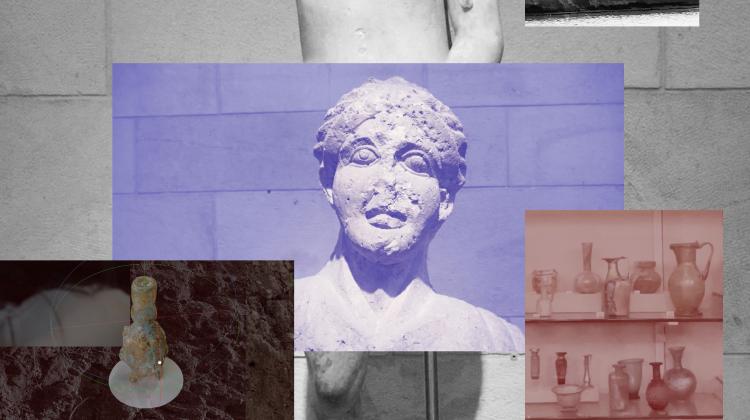AKPIA 2025 Spring Lecture Series: An Evening With:Dima Srouji:The Subterranean Rise: Rememberment and the Psychospatial Liberation of Palestinian Land

Dima Srouji is an architect and visual artist exploring the ground as a deep space of rich cultural weight and a space for potential collective repair. Srouji looks for ruptures in the ground where imaginary liberation is possible. She works with glass, text, archives, maps, plaster casts, and film, understanding each as an evocative object and emotional companion that help her question what cultural heritage and public space mean in the context of the MENA, especially in Palestine. Her projects are developed closely with archaeologists, anthropologists, sound designers, and glassblowers.
She was the Jameel Fellow at the Victoria & Albert Museum in 2022-2023 and is currently leading studio Underground Palestine in MA City Design at the Royal College of Art in London.
Her work is part of the permanent collections at the Stedelijk Museum Amsterdam, Victoria & Albert Museum, Institut du Monde Arabe, Corning Museum of Glass, Thyssen-Bornemisza Art Contemporary, Art Jameel, and the Sharjah Art Foundation.
She has exhibited works at the 60th Venice Art Biennale, Sharjah Art Biennial 15, Lagos Biennial 2024, Sharjah Architecture Triennial 2019, the first Islamic Art Biennale 2023, the first Doha Design Biennale, at the Victoria & Albert Museum, Ford Foundation Gallery, Tai Kwun Museum, Institut du Monde Arabe, Alserkal Arts Foundation, Contemporary Arts Center Cincinnati and others.
Her writing has appeared in multiple platforms, including The Architectural Review, The Avery Review, Migrant Journal, and The Architecture Review of New York.
Abstract
Drawing from architectural research, glassmaking, and speculative archaeology, this talk interrogates the violent fragmentation of Palestinian culture under settler-colonial erasure. Through projects such as Late Monuments, Maternal Labour, and The Red River, I trace lines of thought, processes, and methods that shape my practice, exploring how working intimately with land and artisans becomes an act of rememberment in a moment of dismemberment.
Weaving personal reflections with broader spatial and historical frameworks, this talk considers how intergenerational memory is embedded in materiality, how displacement is mapped onto landscapes, and how psychospatial liberation—an undoing of imposed spatial and cognitive constraints—emerges through artistic practice.
Moving between the subterranean and the surface, between fragments and reconstructions, I will discuss how my work reimagines resurrection and liberation—transforming a single grain of sand into a landscape of potential liberation.


